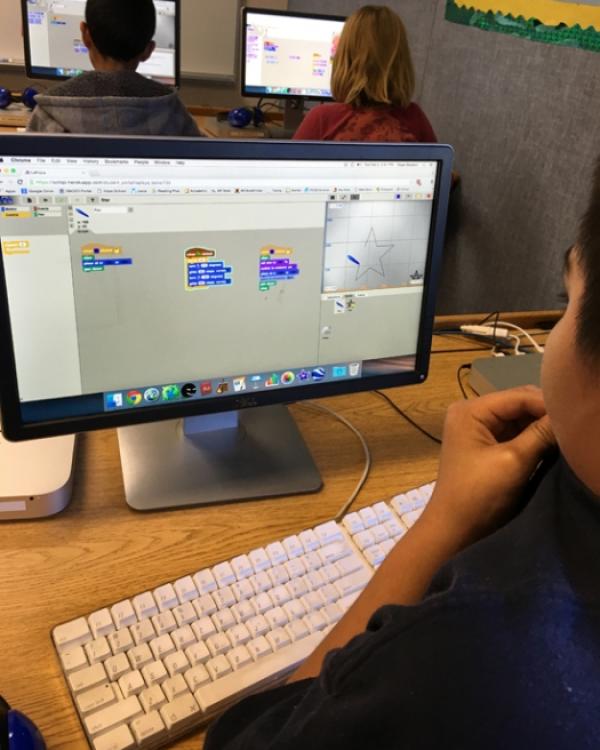
The Gevirtz School studies how elementary school students learn computer science
In his final State of the Union speech, President Obama insisted, “In the coming years, we should build on that progress, by … offering every student the hands-on computer science and math classes that make them job-ready on day one.” In order to put that claim into action, on January 30 President Obama announced the Computer Science for all Initiative with the goal of increasing access for all students to computer science instruction.
Obama’s initiative recognizes that increasing the opportunities for elementary school children – especially girls and other underrepresented minority groups – to learn computer science is an essential aspect of preparing students for computer science careers as well as technology-centered society. Gaining a deeper knowledge of computer science and its fundamental aspects is essential not only to have a clear understanding of “what is going on under the hood” of computer software or hardware, but also to develop critical thinking skills that will serve a student throughout his or her life.
Here at UC Santa Barbara, Gevirtz School faculty member Danielle Harlow and Computer Science faculty member Diana Franklin (now at the University of Chicago) are responding to the president’s call. Harlow and Franklin, working with graduate students and local teachers, created Kids Engaged in Learning Programming and Computer Science (KELP-CS), a modular curriculum for 4th-6th graders. The modules consist of 13-14 hours of computer science instruction where students complete activities either in the classroom or computer lab. For the activities, students use a block-based programming environment called LaPlaya, where they snap together commands (called blocks) to create longer lines of code (called scripts). This method is a bit more intuitive and basic compared to typing individual lines of code as one would in traditional programming languages, such as Java or C++. “Students are always excited to share what they've created, or help others who are struggling,” Ali Hansen, a graduate student at UCSB who teaches KELP-CS at a local elementary school, claims. “I don't think a class period goes by without hearing a student exclaim, ‘Aha!’ or ‘I figured it out!’ or ‘I did it!’”
In the first module, students learn the computer programming skills they need to create a digital story and in module two they learn the computer programming skills they need to design a game. In both modules, students also complete lessons that take them through the engineering design process (a key component of the Next Generation Science Standards for K-12).
“Although researchers are beginning to understand how best to teach computer science at the high school level and middle school level, we know comparatively little about effective instruction at the K-5 level,” Harlow claims. “Our team, in its fourth year of research, has examined how children in 4th through 6th grade understand various computer science concepts (such as initialization) and what skills (such as language/reading, physics, and mathematics) are required to complete our curriculum.”
The work goes beyond teaching computer science, for Harlow adds, “Underrepresented groups have also been studied in our work, including English Language Learner (ELLs) and students with disabilities. We have also been helping teachers incorporate computer science in the classroom by connecting our curriculum to Common Core and Next Generation Science Standards and providing other tips for teachers.”
The knowledge and skills imparted by computer science also enable innovation and open doors. Many fields of science and business depend on computer science. Despite the diversity of the U.S. workforce, it is clear that most of today’s jobs depend on some skills to use computing technologies. It is also clear that this trend is growing as computing becomes embedded more deeply in everyday commerce and society. As Diana Franklin puts it, “If K–12 schools are seeking to make students college- and career-ready, computer science should be part of the core curriculum.”